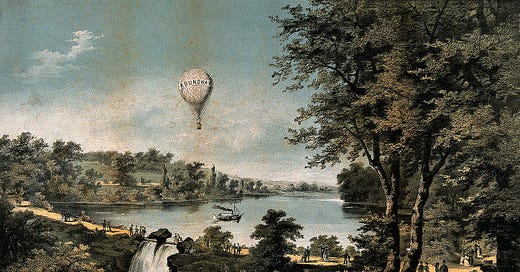The Brief But Spectacular Era of Balloon Mania
Inside the 18th century obsession with hot air ballooning
Unless you’re a dedicated balloon hobbyist, your experience with hot-air ballooning is probably pretty limited. Maybe you’ve been to one of those festivals where you look at lots of balloons in the air, or maybe you’ve been up in one yourself once or twice. For most of us, balloons seem like a whimsical hobby, romantic and picturesque.
A few hundred year…
Keep reading with a 7-day free trial
Subscribe to Looking Through the Past to keep reading this post and get 7 days of free access to the full post archives.



